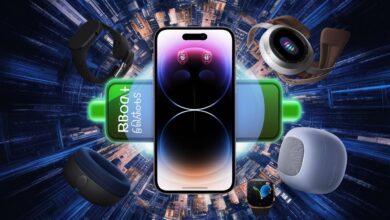New Technology Safeguarding Lone Workers

In the modern workforce, the role of lone workers—those who perform tasks in isolation from other workers without close or direct supervision—has become increasingly prevalent. From delivery drivers to field technicians, many professions involve working alone, presenting unique safety challenges. Recent advancements in technology are stepping up to ensure the safety and well-being of these lone workers, providing innovative solutions through various lone working apps and devices.
The Rise of Lone Working Apps
Lone working apps have emerged as a crucial tool in enhancing the safety of workers who operate in isolation. These applications leverage the power of smartphones and the internet to monitor, communicate, and respond to safety concerns in real time. Here are some key features of these apps:
- GPS Tracking: One of the fundamental features of lone working apps is real-time GPS tracking. This allows employers to monitor the location of their workers continuously, ensuring they are where they are supposed to be and can quickly respond if they deviate from their route or expected location.
- Check-in Systems: These apps often include automated check-in systems where workers are required to confirm their safety at regular intervals. Failure to check in triggers an alert, prompting immediate action from supervisors or emergency contacts.
- Panic Button: A crucial safety feature is the panic button, which can be activated in case of an emergency. This sends an instant alert to a predetermined list of contacts, providing the worker’s location and any other relevant information.
- Man-Down Detection: Some apps incorporate motion sensors to detect if a worker has fallen or is immobile for a certain period. This feature is vital in situations where a worker may be unconscious or unable to call for help.
- Two-Way Communication: Integrated communication tools allow workers to communicate directly with their supervisors or emergency services. This ensures that assistance can be coordinated swiftly and effectively.
Notable Lone Working Apps
Several apps have gained prominence for their robust features and reliability in protecting lone workers:
● StaySafe: This app offers a comprehensive suite of safety features, including GPS tracking, check-ins, and a panic button. Its user-friendly interface and reliable performance make it a popular choice among employers.
● SoloProtect: Known for its man-down detection and discreet alarm features, SoloProtect provides a high level of security for lone workers. It also includes audio verification to assess the situation during an alert.
● Safepoint: With real-time location tracking and customizable check-in schedules, Safepoint is designed to cater to the specific needs of different industries. Its intuitive dashboard allows for easy monitoring and response.
● WorkerSafety Pro: This app emphasizes real-time monitoring and emergency response, offering features like fall detection, panic alerts, and location tracking. It’s particularly favored in industries with high-risk environments.
Wearable Technology
Beyond apps, wearable technology is also playing a significant role in protecting lone workers. Smartwatches and wearable devices can integrate with lone working apps to provide additional layers of safety. These devices often include:
● Heart Rate Monitors: Monitoring a worker’s vital signs can help detect health issues early, ensuring timely medical intervention.
● Environmental Sensors: Detecting hazardous conditions such as gas leaks or extreme temperatures can prevent accidents before they occur.
● Automatic Alerts: In cases where a worker is incapacitated and unable to manually trigger an alert, wearable devices can automatically send distress signals based on predefined criteria.
The Impact on Worker Safety
The integration of these technologies significantly enhances the safety net for lone workers. Employers can ensure a rapid response to emergencies, minimize the risk of workplace accidents, and provide a sense of security for their employees. Moreover, the data collected from these apps and devices can be analyzed to identify patterns and implement preventive measures, further reducing the risk of incidents.
Conclusion
The advent of lone working apps and wearable technology marks a significant advancement in occupational safety. These tools not only provide immediate support in emergencies but also foster a proactive approach to worker safety. As technology continues to evolve, the protection of lone workers will become even more robust, ensuring that those who work alone are never truly alone when it comes to their safety.



